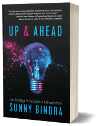FUSION or CONFUSION?
Fusion music has taken over. Whether it’s in Hindi films, the pop charts, or even semi-classical experimental music, it’s only in if it’s of mixed parentage. The most popular filmi tracks of today sound like rock anthems. The sassy, globalised new generation wants music that’s hip and cool, in your face, funky and fitful. And that means rock, rap and hip-hop. Only the accents are Indian now: the words, cantos and rhythms are sourced occidentally.
At a somewhat higher level of exposition, artistes like Prem Joshua, Nitin Sawhney and Karunesh, who use eastern instruments to belt out western riffs and create a vaguely pleasant melange of globalised sound, are all the rage. Even venerable classical masters are not above the fray. The heads of many gharanas are not merely tolerating but actively promoting the forays of their progeny into the fusion arena. Renowned classical vocalist Pandit Ajay Pahonkar, for example, sang the sublime Piya Bawari for his son Abhijit. Abhijit, brought up immersed in the music of two renowned gharanas, mostly plays his music on an electronic keyboard, which simulates the sounds of sitars, tablas, and santoors, and blends them with string and horn sounds from around the globe. Like many fusion songs of its ilk, Piya Bawari was a worldwide hit.
This is merely the opening stanza of an historic renaissance in world music, we are told. Walls are coming down, barriers are being breached. Once-isolated cultures are mingling and catalysing new experimentation and fresh ideas. As the musical traditions of the world are thrown into the global melting pot, a new, better, sound experience will emerge. As this New Age asserts itself, we will be all the richer.
The endeavour is daring, therefore, and noble. This is reflected in the titles given to fusion albums and titles. The songs are “of the earth”; they are “written on the wind”; they capture “native rituals”; they respond to the “calls of the wild”; they echo “ancient legends”. The music may be new, but it represents timeless wisdom and puts us in touch with our essence.
If only most of what is being produced wasn’t such miserable trash.
The new Bollywood songs being belted out for the hip new Indian teens are bad enough, but forgivably so. Songs aimed at the hormonally overwhelmed are not known for their subtlety or depth. They are merely supplanting the usual, time-worn saccharine sounds with the idiotic cadences of American rap. That’s OK: the kids usually outgrow a taste for urgent but musically challenged drivel.
What’s a little more worrying is the cultural pretension of the more subtle fusion movement. It’s a musical sangam, we are told: the epic meeting of grand traditions, kept apart for centuries by distance, ignorance and isolationism. The new fusion is the new music for the new global Indian. That proposition, like the titles of the songs themselves, is so much hot air.
To understand why this might be so, we must look at the origins of our music. The origins of South Asian classical music can be dated back to the Vedas, the oldest scriptures of what became known as Hinduism. The hymns of the Samaveda are thought to be the earliest rendition of man’s yearning to connect with something bigger through sound. The two classical music streams are Hindustani – focused on the northern part of the sub-continent; and Carnatic, from South India.
Both classical schools centre on the raga – the melodic basis of the music of all of South Asia. There are hundreds of such ragas, and each has its own melodic structure and unique form – and indeed its own fascinating history. Yet, within this tightly defined structure, a master musician can generate almost infinite variations through subtle ornamentation. Some ragas can be traced back to medieval and ancient times; others were invented (or perhaps reinvented) just a few decades ago. Most have undergone subtle transformations over the centuries. The oft-labelled king of ragas, raga Darbari, for example, was popularised by Tansen, the great singer-composer in the court of Emperor Akbar, but may actually have originated from Karnata.
Importantly, a raga must evoke a particular emotion or invoke a certain mood. It is meant to move, to delight, to stimulate an emotional reponse. This association with mood, season, even time of day is critical. Raga Darbari is meant to be heard at midnight, raga Ramkali at daybreak, raga Malhar during the onset of the Monsoonal rains. The Guru Granth, the holy book of the Sikhs, is a collection of hymns composed and classified using thirty-one ragas.
If there is anything elemental and essential about the music of South Asia, it can be found in the hundreds of ragas that have connected us with the seasons, the sounds of nature, the movements of the earth, moon and sun for two millennia. It is this unique treasury of sound that we are debasing by accretive adulteration. The word “fusion” refers to a process that produces a single, better entity; otherwise why do it? But the fusing of the musical heritage of South Asia with every sound and instrument from every far-flung corner of the globe is more milavat than milap.
What began as interesting experimentation is turning into wholesale defilement. The late R. D. Burman introduced western-style guitars and rhythms into popular filmi music in the 1970s, but kept the melodic structure of the songs intact. His classic songs of that era have gone down in history, and are much in demand thirty years later. A. R. Rahman went further in the 1990s and brought full-range western instrumentation and acoustics into popular Indian music. I wonder if these two accomplished composers knew what their innovations would portend. Their successors today appear very ready to ditch the entire raga structure in their headlong race to be more trendy, more daring, more insanely experimental than their peers.
I am not writing this from the perspective of an old-fashioned stickler for tradition – though much of the criticism of fusion and its cousins does come from old fogies. I am as thrilled by the moving anthems of U2 as I am by the folk songs of the Punjab. I marvel at the nuances of the voice of Sade as well as of Noorjehan. But I have never understood the desire to mix the two. Milkshakes and lassis are perfectly delectable as separate drinks; does it occur to anyone that mixing them would produce a superior beverage?
It is one thing to sit down with musicians from a different tradition and strum out a few ‘mix-and-match’ routines in the interests of understanding and harmony, as Pandit Ravi Shankar and, more recently, Shujaat Khan have done. It is another to abandon the fundamental precepts of both traditions in the name of a hazy avant-gardism and proclaim that a new music is born.
Pandit Jasraj, the doyen of living Indian classical vocalists, put it well in a recent interview. A man who trained in the classical tradition from the age of six, he cannot understand why we would want to degrade one of the world’s most advanced musical systems. In any case, he advises, meaningful fusion would only occur when one who is a master of both eastern and western traditions attempts it. Not, the implication being, computer-crazed composers with dollar signs flashing in their eyes.
Ivan Hewett, writing in The Musical Times in 2001, went further: “A spectre is haunting music, the spectre of ‘fusion’. It has no body – no melodies, no harmonies, no instrumental colours it can call its own – but its ghostly presence is everywhere, seeping under and over every musical category.” Referring to the “musical, emotional and intellectual vacuity of much fusion music”, he raised the important question: “Surely music is as much to do with the expression of rootedness in a certain place, and the assertion of belonging to a community? The fact that fusion musicians have such an insatiable appetite for music with just those qualities shows that, at some dim level, they’re aware of that uncomfortable truth but their ideology leads them to deny it. What this leads to in practice is a kind of systematic hypocrisy. They make use of the ‘evocative’ qualities of, say, north Indian devotional singing, but strip it of its real meaning by removing the devotional context, and surrounding the chant in a protective barrier of acoustic mist. As for the audience, how many of them will understand the words of the chant, if they can hear them?”
Hewett was at pains to insist that his withering critique was not a plea for some kind of misplaced purity. “All musical cultures are mixed”, he clarified, “and always have been…But there is all the difference in the world between a genuine marriage between different musics – as in the adoption in Renaissance Europe of the Arab lute – and the kind of shot-gun weddings we see nowadays.” He concluded that in today’s fusion music there is “no clash of opposing values, no emotional ambiguity, just a warm bath of evocative flavours.” Modern fusion, “in its refusal of real human attachment, and its restless search for new flavours, it is the perfect expression of consumerism.”
There’s the rub. If fusion was driven by a passionate desire for the betterment of music, it might actually lead to a higher form. This has happened in the past, as Persian and Arabic influences seeped into Indian music from the 11th century onwards. The arrival of the Sufi mystics led to the development of the pulsating qawwali music popularised worldwide by Nusrat Fateh Ali Khan at the close of the 20th century. The courts of Akbar, Jehangir, Shahjahan and Bahadur Shah took musical patronage to new heights, and led to the rapid promulgation of the remarkable ghazal form.
Today’s seepage, however, is aimed at gathering the dollars of the global audience by creating easily accessible, dimly pleasing, vaguely uplifting sounds that are clothed in a faux higher purpose. That’s the seductive undertone: become a New Age connoisseur, no effort required. We South Asians have a unique knack for devaluing our own remarkable cultural strengths and selling our heritage down the river. It is the musical equivalent of forcing your very accomplished mother to renounce her sari and sending her to flip burgers at McDonald’s clad in jeans.
Fusion is spreading only because you want to buy it. Words on the written page cannot stop you. As King Nanyadeva reportedly put it in the 12th century, referring to raga-based music: the sweetness of sugar cannot be separately described; it must be experienced for oneself. Listen to a simple, pure, unembellished rendition of a raga. Any raga, in any form – bhajan, ghazal, thumri, or even a simple raga-based film song. Feel your soul stir, and know that you communing with your own essence.
That uplift cannot come from computer-generated dissonance. The unholy matrimony called modern fusion will not stand the test of time. It will soon be washed away, a forgotten musical aberration that reflected the mores of a shallow and materialist epoch.

Buy Sunny Bindra's book
UP & AHEAD
here »











